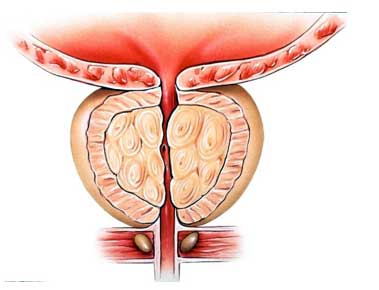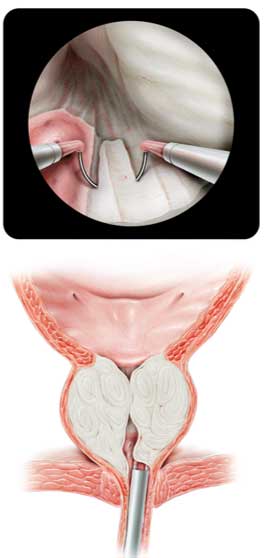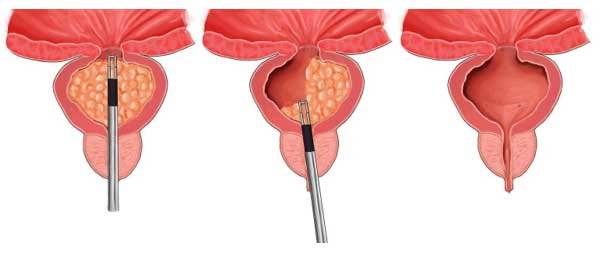What is Endoscopic Prostate Surgery (TUR-P)?
Benign enlargement of the prostate is a health problem that increases with age and causes serious problems in the social life of the patient. It is a condition seen in approximately half of the male population over the age of 50 and causes complaints in half of these patients. Difficulty urinating, inability to empty completely, frequent urination, increased frequency of going to the toilet at night are the most common complaints. Mild cases of this condition usually benefit from lifestyle changes and drug treatments. However, surgical treatment may be required for patients who do not benefit from these treatments.

In the case of benign enlargement of the prostate, if the patient does not benefit from drug therapy, surgical treatments are performed in cases such as recurrent catheterization, urinary tract infection, bleeding in the urine, bladder stones, kidney failure, and with the patient's preference.

TUR-P operation, based on the principle of transurethral resection (scraping the prostate from inside the urinary tract), is the most commonly used surgical technique in benign prostate enlargement. Endoscopic prostate surgeries broke new ground in prostate surgery towards the end of the 20th century. Thanks to this technique, which reduces the need for open surgery, less bleeding and infection are observed. It has the advantage of shorter hospital stays and more comfortable post-operative period.
How is Endoscopic Prostate Surgery Performed?
By entering the urinary canal with a camera system, the operation is performed by scraping it from the inside with the help of the instrument that performs the cutting process by providing electrical transmission. Small pieces accumulated in the urine bag during the process are collected at the end of the operation with the help of the washing system and taken out. These pieces are sent to the laboratory for final pathological examination. After the scraping, the bleeding foci in the prostate area are taken under control and we follow our patients in our service for 2-3 days with a probe.

This operation is performed with monopolar and bipolar electrocautery devices in our clinic. The bipolar cautery system has advantages in reducing the development of TUR syndrome, and there is no significant difference affecting the success of the operation.
From the first weeks after this operation, we can see an improvement in the symptoms of the patients and a significant increase in the rate of urination.

~
No. It is even possible that there is an increase in sexual desire, sexual satisfaction and erection rates. As in all prostate surgeries, after orgasm, the sperm fluid may not go out of the body (retrograde ejaculation), but towards the bladder.
This can only create problems in conceiving children naturally. However, the patient can have a child with assisted reproductive techniques such as vaccination and in vitro fertilization.
The pathology result results after an average of 1 week.
In case of doubt in the pre-operative examination, a biopsy can be performed from the prostate. If there is no doubt, the pathological examination after the operation may give the same result.
In this procedure, the central and transitional zone of the prostate growing towards the urinary canal is removed.
You will come for checkups at regular intervals, but you will not need to use prostate drugs.
You will usually be discharged after 2-3 days of hospitalization.
There may be slight burning in the urine in the first 1 week after the operation.
At least 2lt/day of water will be drunk and a watery and vegetable-based diet will be given. Acidic foods will not be consumed. Fibrous foods will be consumed.
In the first week, you can take short walks at a light pace. It is recommended that you start normal daily activities after 1 week.
You can have sexual intercourse after 1 week.